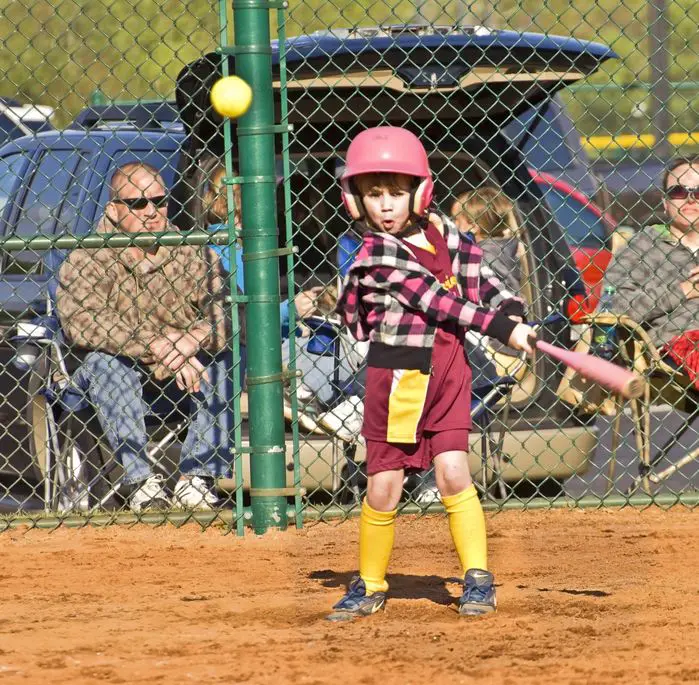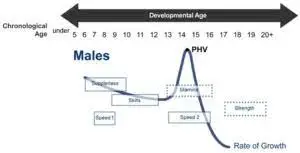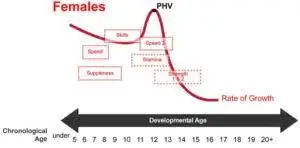
The end goal of softball should be that number one, everyone participates and number two that everyone continue to participate in softball at some level right into their retirement. This is the goal of Long Term Athlete Development.
Long Term Athlete Development Considerations
Every day, youth are entered into softball, first to get them involved in something fun and to play with other kids their age and to learn movement skills that will help them to be well rounded sports enthusiasts. That is a good start. But then something else happens….
The participation in softball turns into a goal in softball, which turns into a conquest in elite athletics which turns into a drive for success in the game at any cost. The difficulty is that there is in fact a cost to such a path. Injury and burnout are only 2 of the most likely experiences children will encounter as their intensity of involvement in the game increases and the demands become greater.
Children are no longer being allowed to simply be children who are doing children things. As sports such as softball continue to specialize early and pressure children through their increasingly demanding programs that insist that if you do not play all year round and compete at the highest levels early, then there will be no hope for her to be successful as a young adult or teenager.
It has been shown however that children who participate in multi sport activities through their youth are much more successful in their chosen sport which should not be until 14 years of age for softball.
Following are some key physiological points to consider in the Long Term Athlete Development model. As you can see from the images that have been used from Advanced Athlete Performance there are critical stages for physiological development where the most improvement will occur.


Stage 1 – Active Start (0-6 years)
This stage is the beginning. The starting point where we are simply attempting to give children the exposure to activities that are not in front of the TV or on their phones (yes even on their phones). The goal is for them to have fun and have success in skills that are suited to their age and development level.
Athletic Abilities for this stage:
- agility
- balance
- speed
Developmental skills:
- social skills
- enhances brain function
- confidence
- emotional control
Stage 2 – FUNdamental (girls 6-8 / boys 6-9)
This stage is moving more towards organization. I stress the word “towards” organization. It is critical to resist the temptation for high level competition and maintain the occasional formal function while still focusing on fun and challenges appropriate to their level. Multi-sport activities need to be the foundation of development for this age group.
Athletic Abilities for this stage:
- agility
- balance
- coordination
- speed
Developmental Skills:
- confidence
- emotional control
- working in groups
Stage 3 – Learn to Train (girls 8-11 / boys 9-12)
This is where the formalization begins in softball and children can narrow their favorite sports down to 3. It is still critical that children at this age are not yet specializing in softball and that they maintain a multi-sport schedule that still leaves time for fun and social activities with their friends. Individual sports such as gymnastics, figure skating and diving do specialize earlier however caution is still recommended. I have seen children at 8 years old with back problems due to over training in gymnastics. A very unfortunate and miss guided effort in my opinion.
The practice to game ratio must remain weighted more to practices than games (70:30) which is not what we see in North America. In fact this is where we see a lot of specialization in softball beginning to peak. Hence the number of kids leaving this game pre-maturely.
Athletic Abilities for this stage:
- hopping
- bounding
- strength using body weight / light medicine balls
- endurance using games and relays
- flexibility through exercises and activities
Developmental Skills:
- critical stage for overall motor development
- team work through unstructured activities
- confidence
- emotional control
- sportsmanship
Stage 4 – Train to Train (girls 11-15 / boys 12-16)
This stage is essentially the beginning of softball specific training. I say again, the beginning. It is critical to resist charging into softball specialization and begin preparing the athlete for specialization and high performance. National Sport Organizations will likely have specific LTAD models that will guide you during this stage.
Note: even though this stage is so close to specialization it is still important to maintain a higher ratio to training than to formalized competitions (60:40).
Athletic Abilities for this stage
- develop aerobic base
- flexibility
- consolidate sport specific skills
- strength (towards the end of this phase)
- anaerobic alactic (towards the end of this phase)
Developmental Skills:
- team work
- competing to win using the basics
- emotional control
- game preparation
Stage 5 – Train to Compete (girls 15-21 / boys 16-23)
Finally! Time for specialization. Some may say yaaaaaaaaaaay! This is where the athlete will chose one sport if pursuing high performance and focus on excelling at that sport only. Preparing for excellence at the elite level in softball where she will train but not necessarily compete year round. Training using a periodized plan will optimize gains leading to their highest potential during the season. The game to training ratio will change in favor of competition being higher (40:60) during the competitive phase.
Sport Specific Considerations for this Stage:
- sport psychology
- nutrition
- recovery / regeneration
- injury prevention / management
- periodization (single, double, triple, multiple)
Stage 6 – Train to Win (girls 18+ / boys 16-23)
Time to focus on successful softball performance. The goal here is to win competitions and finish at the top of the pack. National and international play is where the top performers will be at this level. This is based though on a solid foundation that has been developed through the first 5 stages of this athlete. Those who have been successful will be carded athletes and now working full time at the game. training to competition ration will also change slightly to favor high level competition rather than training during the competitive phase (25:75)
Sport Specific Considerations for this Stage:
- sport psychology
- nutrition
- recovery / regeneration
- injury prevention / management
- periodization (single, double, triple, multiple)
Stage 7 – Active for Life (any age participant 12+)
This stage is about participation. Although there are many levels of participation, the focus is still on enjoying softball and being a part of activities that keep you healthy and active. An athlete may enter this stage right away after the first 2 stages or may retire to this stage from high performance softball as an adult.
Sport for Life – Life in Sport
The hardest task for a softball coach or administrator is to work against history and programs that have been the same for a very long time, with no indication of change any time soon. I challenge you to challenge the system and push for change in softball in North America for our youth. We talk about obesity being an epidemic. Do you think this might have anything to do with it. I feel it is a possibility, as youth are dropping out of softball and finding “funner” things to do.
We still need to get kids involved in this great game and other sports, and to make it more “athlete centered” regardless of skill level or age. An adult for example who has never participated in sport has a lot of catching up to do. We need to invite those individuals as well into our recreational programs such as slo pitch and give them the opportunity to enjoy this pass time as much as we do.

